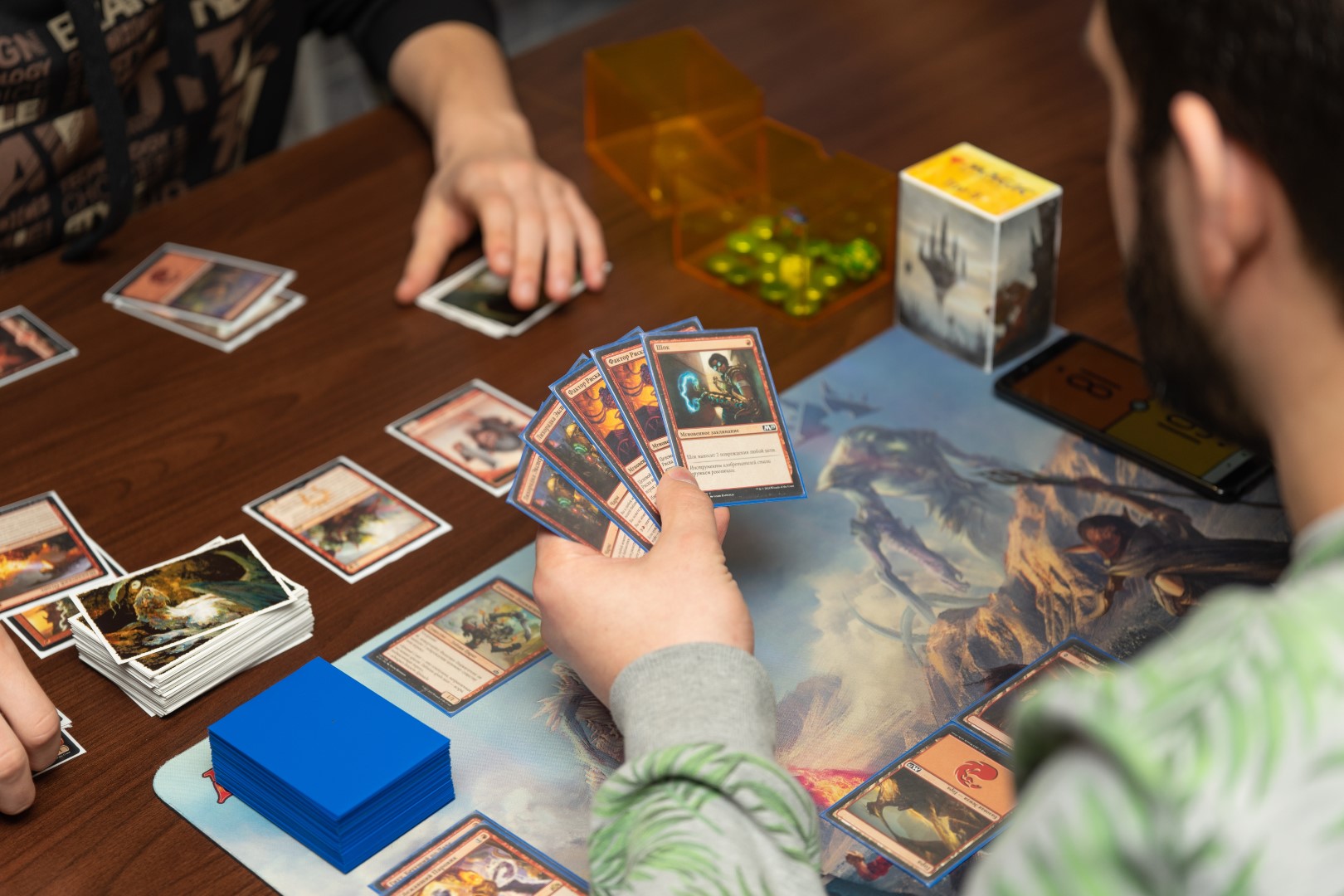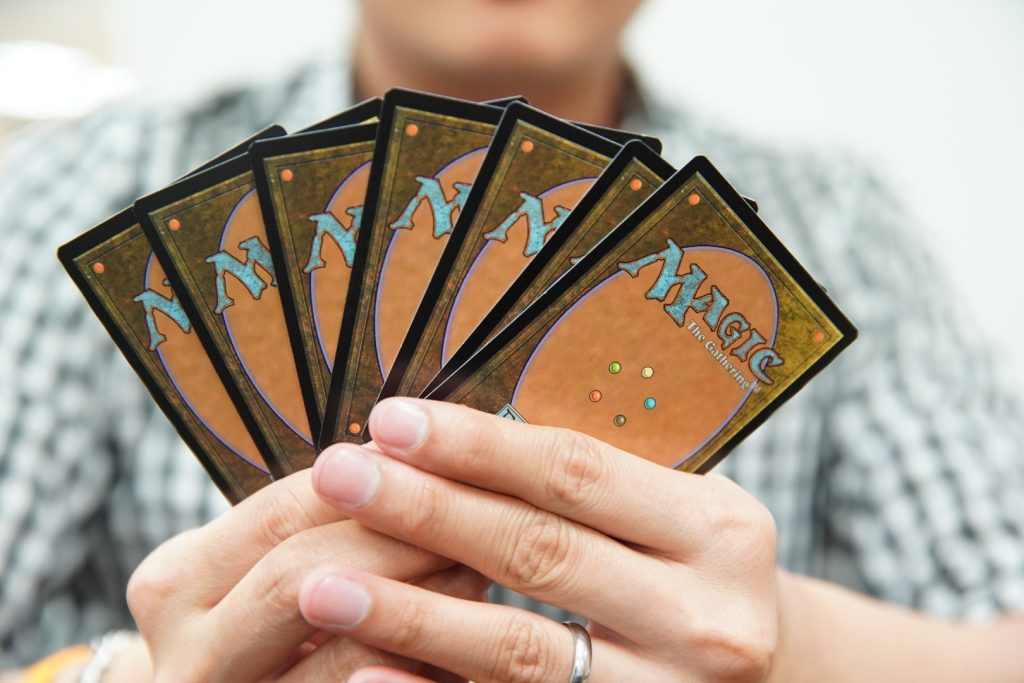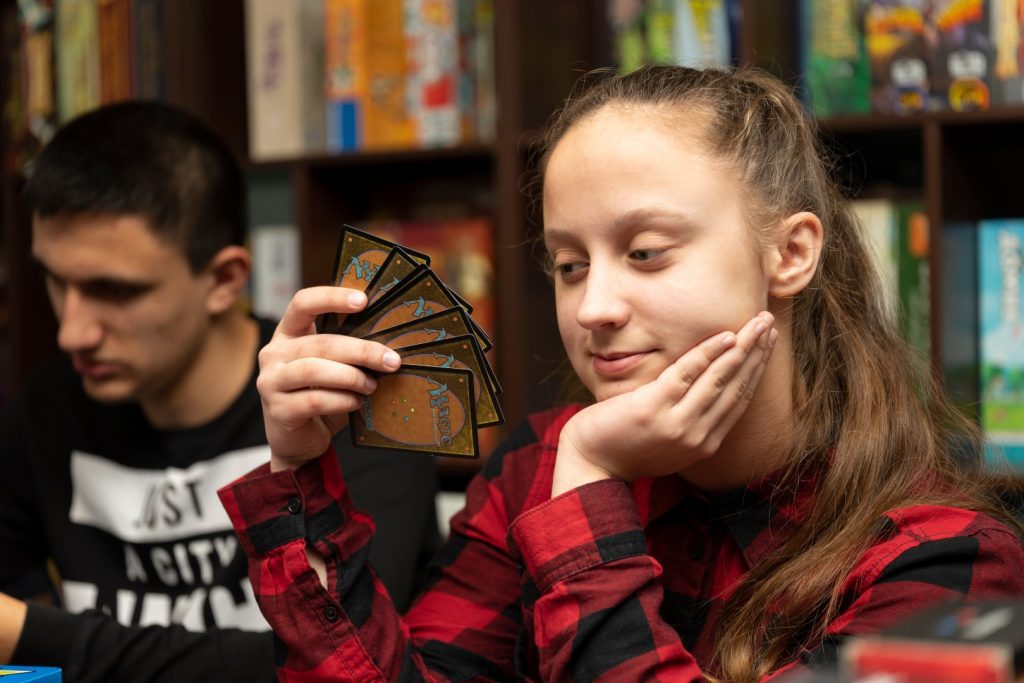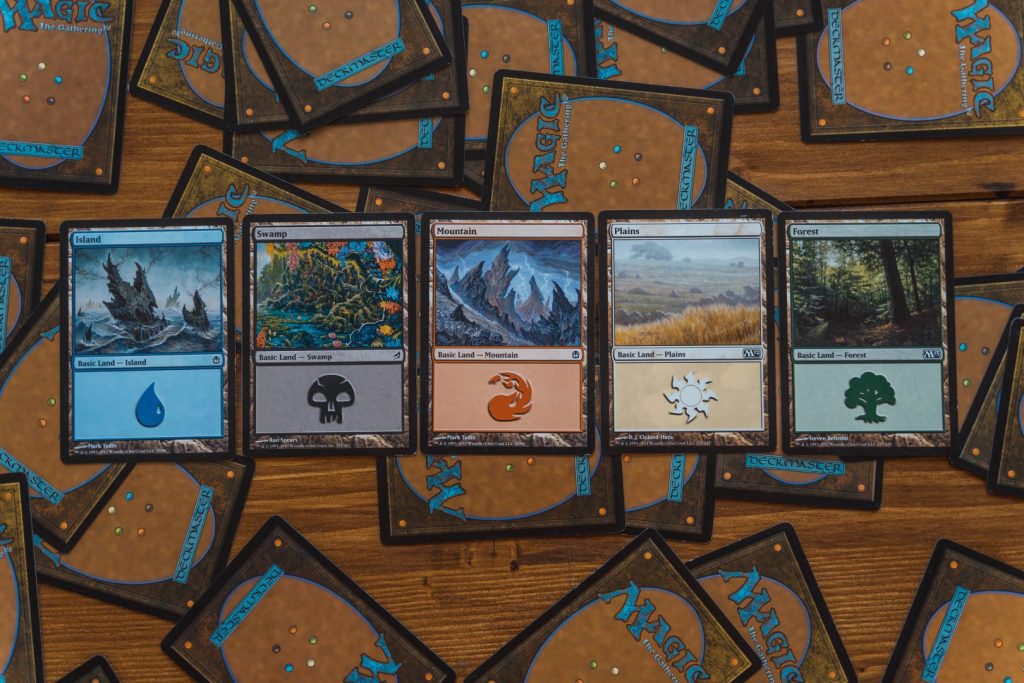A Brief History of Magic: the Gathering

MtG nearly didn’t happen. Wizards of the Coast was busy making roleplaying games and supplements in Peter Adkison’s basement in 1991. Dr. Richard Garfield, a doctorate candidate in combinatorial mathematics, addressed Adkison, the owner and CEO of Wizards. Garfield wanted Wizards to publish his “RoboRally” board game concept.
Adkison enjoyed RoboRally, but he believed at the time that Wizards lacked the money and technological know-how to create a board game. So he instead requested Garfield to create a basic game that could be played in minutes and was portable enough to be played while “waiting in line at conventions.”
Garfield returned to his studio and created the first version of the game we now call Magic.

Brief History of Magic the Gathering
Dr. Richard Garfield produced the original Magic core set, retrospectively titled Alpha, which was purchased by Wizards of the Coast and published in August 1993. Due to high demand, a second Beta print run was issued two months later, followed by a renamed Unlimited Edition. Richard named the game Magic when he initially created it.
Because the name was too simple to copyright, it was altered to Mana Clash. Because everyone kept calling it Magic, they investigated what they needed to do to call it Magic. The solution was to add something to make it more distinctive. Because the intention was to alter the sub names continuously, Richard picked “The Gathering” as a sub name to represent the beginning.
Ice Age marked the start of the first “cycle” of thematically connected new releases, commonly known as a block. Arabian Nights, published in December 1993, was the first expansion set to include new cards rather than reprints. Commander Legends: Battle for Baldur’s Gate is the most recent of almost seventy expansions.
With the introduction of new items, the official rules for Magic change regularly. Most of these modifications merely describe and allow new mechanics. At the same time, base set upgrades, like the 6th Edition update in 1999 and the Grand Creature Type Update in 2007, have happened more rarely. It’s typical to hear that a new update will “kill” the game. Despite this, the game has thrived, and supposedly that the most recent large set is the best-selling set of all time.
According to Mark Rosewater, the trading card game, the color wheel, and the mana system are three essential elements proposed by Richard Garfield at the game’s creation. Furthermore, Wizards of the Coast has worked hard to acquire new players since 2008.
Among these initiatives include a change in game design to reduce complexity creep, scheduled play opportunities to introduce women to Magic, and more in-game representation of women and minorities. However, despite these efforts, the female player base is in the mid-twenties, down from 38 percent in previous years.

The Digital Age
Magic was developed into several PC and video games over the years. However, the game did not wholly enter the digital era until 2002, when Magic Online launched.
Magic has expanded its reach to gaming consoles like the Xbox with the release of Duels of the Planeswalkers. In contrast to Magic Online, participants of Duels face off against computer-controlled opponents, allowing them to perfect their abilities before ever shuffling any real cards.
Magic progressed at an unprecedented pace thanks to the advent of the digital age. While card collectors searched the internet for rare cards, players discussed game strategies and uploaded decklists online. Because of this, the participants and the game improved, making it a genuine gathering in every sense.
Magic: The Gathering Today
These days, Magic is more popular than it has ever been. Over twelve million players from all parts of the world have a common interest in card collecting, deck building, and getting together to play Magic. At its core, the game of Magic is about bringing people together in the spirit of friendly competition and enjoyable activity.
More than thirty million players have adopted it since it first appeared. Today, those individuals play the game with some combination of the eighteen thousand cards available for the game. MtG is printed in eleven different languages.
Magic Shows on YouTube, such as “Spellslingers” from Geek & Sundry, often get hundreds of thousands of views. A video posted on a YouTube channel known as “open boosters” shows a guy opening old packs of MtG cards.
Conclusion
Magic: the Gathering is one of the most popular TCGs of all time. Both children and adults play. The game has thrived over the decades since its launch. MtG has had success in both physical tournaments and digital play. In short, Magic is one of the most exciting and successful games ever developed.
More Key Information to Know about Magic: The Gathering
Here are a few basic things you need to know about Magic: The Gathering.
Trading Card Game
Magic (or MtG) is a trading card game, sometimes known as a TCG. Trading cards precede Magic by more than a century, and solitaire games date back to the 1950s. But Magic was the first product to mix randomized, collectible cards with deck-building and interactive gameplay.
The Colors of Magic
Magic’s card colors are white, blue, black, red, and green. Each card can be colored or colorless. Multicolored cards and hybrid multicolored cards give more options.
Each color has unique tactics, mechanics, and ideologies. These features come from color associations and game design.
Mana System

Mana is the ‘currency’ of MtG. Lands (Plains, islands, swamps, mountains, and Forest) create mana which is then used to play spells in the game. Players choose cards for it to function, as many cards as feasible. Each card has a unique purpose being in a deck. This variety of card use makes the trading card game operate.
Card Types
Each Magic card has a kind and different playing rules. Artifact, creature, enchantment, instant, land, planeswalker, and sorcery are all options. Some things have multiple card types (e.g., an artifact creature).
Ron
Share this Post
Recent Posts
- MTG’s Olivia, Opulent Outlaw Sees Massive Price Spike Amid Assassin’s Creed Release
- Wizards Has Announced a New Charity Secret Lair for the Late Sheldon Menery
- What size are Magic: the Gathering Cards?
- Does Snoop Dogg Play Magic: the Gathering?
- Wizards of the Coast Offers Up to $145k for Creative Text Designer for MTG Cards
Product Categories
ProxyMtG@protonmail.com
